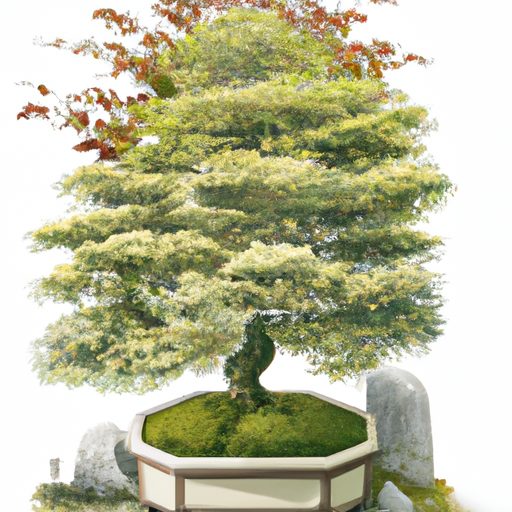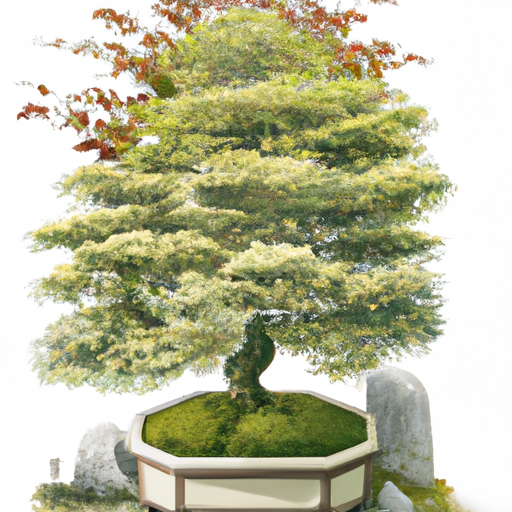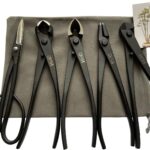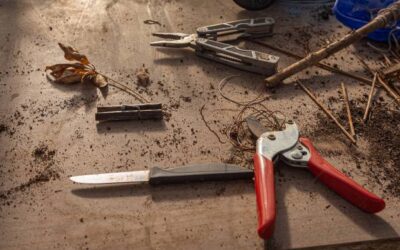In this article, you will learn about the impact of weather conditions on Japanese garden tools and how you can protect them. Japanese garden tools are known for their durability and craftsmanship, but they can still be affected by the elements. By understanding how weather conditions such as rain, humidity, and temperature can affect your tools, you can take proactive measures to mitigate any damage.
One of the main issues that Japanese garden tools face is rust. Rust occurs when metal is exposed to moisture and oxygen, so it’s important to keep your tools dry and moisture-free. After each use, make sure to wipe them clean and store them in a dry place. If you live in a humid climate, you may want to consider investing in a dehumidifier or silica gel packets to absorb excess moisture. Additionally, regular maintenance such as oiling and sharpening your tools can help prevent rust and prolong their lifespan.
Introduction
Understanding the significance of Japanese garden tools
Japanese garden tools play a vital role in creating and maintaining the beauty of traditional Japanese gardens. These tools are not only necessary for the physical work involved, but they are also deeply rooted in the culture and history of Japan. Each tool is meticulously crafted and designed to embody the principles of simplicity, elegance, and harmony that are central to Japanese aesthetics.
Weather conditions and their effects on tools
The weather conditions in which Japanese garden tools are used can significantly impact their performance and durability. Factors such as humidity, high temperatures, rain, and moisture can all pose challenges and potentially damage these valuable tools. Therefore, understanding the impact of weather conditions and implementing appropriate measures to mitigate their effects is essential for preserving and prolonging the life of Japanese garden tools.
The Impact of Weather Conditions on Japanese Garden Tools
Effects of humidity on Japanese garden tools
Humidity is one of the primary weather-related factors that can adversely affect Japanese garden tools. High humidity levels can cause metal tools to rust and wooden tools to warp. The moisture content in the atmosphere can seep into the materials, leading to the degradation of the tools’ structural integrity. Rust can compromise the sharpness and functionality of metal tools, while warping can render wooden tools ineffective and prone to breakage.
Effects of high temperatures on Japanese garden tools
Extreme heat can also have a detrimental impact on Japanese garden tools. Wooden tools are particularly susceptible to expansion and contraction due to temperature fluctuations. As the temperature rises, the wood can expand, leading to a misalignment of joints and potentially causing the tool to malfunction. Conversely, when the temperature drops, the wood may contract, resulting in cracks or fractures. Such damage can render the tools unusable or significantly impact their effectiveness.
Effects of rain and moisture on Japanese garden tools
Rain and excessive moisture pose another set of challenges for Japanese garden tools. Wooden tools are highly absorbent, and prolonged exposure to rainwater or excessive dampness can cause them to swell, distort, or even rot. The adhesives holding the tool together may dissolve, loosening joints and compromising structural integrity. Metal tools, on the other hand, can rust when exposed to moisture, leading to corrosion and reduced functionality.

1. Effects of Humidity on Japanese Garden Tools
Understanding the relationship between humidity and tool maintenance
To mitigate the adverse effects of humidity on Japanese garden tools, it is crucial to comprehend the relationship between humidity and tool maintenance. Regular maintenance should include inspecting tools for signs of rust or warping, cleaning them properly, and applying appropriate protective coatings.
Rusting of metal tools in high humidity
Metal tools are especially vulnerable to rust formation in high humidity conditions. The moisture in the air can react with the metal surface, resulting in the oxidation process known as rusting. Rust not only diminishes the aesthetic appeal of the tools but also compromises their functionality. Once rust sets in, the blades of pruning shears, saws, and other tools may lose their sharpness and become less effective.
Preventing rust through proper storage and maintenance
To prevent rust formation on metal tools, it is essential to store them in a dry environment with minimal exposure to humidity. Additionally, regular cleaning and maintenance are necessary to keep the tools in optimal condition. After each use, wipe the tools thoroughly to remove any dirt or moisture. Applying a thin layer of oil or lubricant can also help protect the metal surfaces from rusting. By maintaining a proactive approach to tool care and storage, you can mitigate the impact of humidity on Japanese garden tools.
2. Effects of High Temperatures on Japanese Garden Tools
Understanding how heat affects the durability of tools
High temperatures can have a significant impact on the durability of Japanese garden tools, particularly those made of wood. Wood is a natural material that responds to fluctuations in temperature. As the temperature rises, the moisture within the wood evaporates, causing shrinkage. Conversely, when the temperature drops, the wood absorbs moisture from the air, leading to expansion. This constant expansion and contraction can weaken the joints and overall structure of wooden tools.
Expansion and contraction of wooden tools
The expansion and contraction of wooden tools can result in misalignments and cracks, rendering them less effective or even unusable. For example, a misaligned handle can make it challenging to grip a tool securely, hindering its functionality. In extreme cases, cracks in wooden tools can extend deep into the material, rendering them unsafe and requiring replacement.
Protecting wooden tools from warping and cracking
To protect wooden tools from warping and cracking, it is essential to store them in a controlled environment with stable temperature and humidity levels. Avoid exposing wooden tools to direct sunlight or placing them near heat sources, as these can significantly impact their dimensional stability. Applying a protective layer of oil or wax can also help seal the wood, reducing its susceptibility to moisture absorption. Regular inspection and maintenance of wooden tools are crucial to detect any signs of warping or cracking early on and take appropriate measures to mitigate further damage.

3. Effects of Rain and Moisture on Japanese Garden Tools
Understanding the risks of rain and moisture on tool performance
While rain is essential for maintaining the lushness and beauty of a Japanese garden, it can pose risks to the performance and longevity of the tools used in its upkeep. Rainwater and excessive moisture can seep into the materials of Japanese garden tools, leading to swelling, warping, and deterioration.
Preventing moisture damage to wooden tools
To prevent moisture damage to wooden tools, it is important to store them in a dry location when not in use. If the tools do come into contact with rain or moisture, thoroughly dry them as soon as possible to prevent absorption. Avoid storing wet tools, as this can promote fungal growth and accelerate deterioration. Applying a weather-resistant coating to wooden tools can provide an additional layer of protection against moisture penetration.
Maintaining metal tools in wet conditions
For metal tools, immediate drying and proper maintenance are essential after exposure to rain or moisture. Thoroughly clean the tools to remove any dirt or debris that may have accumulated, as these can trap moisture and facilitate rust formation. Applying a thin layer of oil or lubricant can help repel water and prevent rusting. Regular inspection of metal tools for signs of rust is crucial to catch and address any issues before they worsen.
How to Mitigate the Impact of Weather Conditions
Proper storage and maintenance practices
One of the most effective ways to mitigate the impact of weather conditions on Japanese garden tools is to adopt proper storage and maintenance practices. Store the tools in a dry environment, away from direct sunlight, excessive heat, or moisture. Regularly inspect and clean the tools, removing any dirt or moisture that may have accumulated. Proper maintenance ensures that the tools remain in optimal condition and reduces the risk of damage caused by weather-related factors.
Using protective covers and cases for storage
To provide an extra layer of protection for Japanese garden tools, consider using protective covers or cases during storage. These covers can shield the tools from variations in temperature, humidity, and moisture. Additionally, covers can prevent dust and dirt from accumulating on the tools, making maintenance easier and reducing the risk of rust formation.
Applying weather-resistant coatings to tools
Another effective measure to mitigate the impact of weather conditions is to apply weather-resistant coatings to Japanese garden tools. For wooden tools, applying a sealant or varnish can help minimize moisture absorption and enhance the wood’s durability. Metal tools can benefit from a protective coating or anti-rust treatment to prevent oxidation and maintain their functionality.
Conclusion
Acknowledging the importance of mitigating weather-related impacts on Japanese garden tools is crucial for their preservation and longevity. By understanding the effects of humidity, high temperatures, rain, and moisture, steps can be taken to minimize damage and ensure the tools’ optimal performance. Implementing proper storage and maintenance practices, using protective covers, and applying weather-resistant coatings are all effective ways to mitigate the impact of weather conditions on Japanese garden tools. By taking care of these tools with diligence, one can continue to enjoy the beauty and tranquility of Japanese gardens for years to come.








